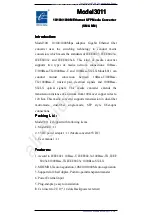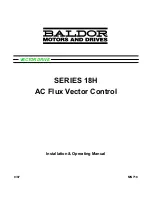
IMPORTANT SAFETY INSTRUCTIONS
SAVE THESE INSTRUCTIONS !
This manual contains important safety and operating instructions. This manual also covers assembly of the
Trace Engineering line of Power Modules with both Sinewave and DR series inverters, C40 charge controllers,
AC and DC disconnects, PVGFP, and other devices. Specific operating and hookup instructions for each
separate component are provided in the individual component manuals packaged with these assembly
instructions. Before installation, review the applicable sections of this manual, and always follow the safety
practices described below:
General Precautions
1. Before using the inverter/charger, read all instructions and cautionary markings on (1) the
inverter/charger, (2) the batteries and (3) charge controllers, and (4) in this manual as well as the individual
manuals provided for each component of the system.
2. CAUTION - To reduce risk of injury, charge only deep-cycle lead acid, lead antimony, lead calcium, gel
cell, absorbed mat, or NiCad/NiFe type rechargeable batteries. Other types of batteries may burst, causing
personal injury and damage.
3. Do not expose the Power Module to rain, snow, or liquids of any type without proper installation of the
sealing kit, which is included with each Power Module
4. Qualified personnel (with electrical experience) should make all electrical connections. Incorrect
installation may result in a risk of electric shock or fire.
5. To reduce risk of electric shock, disconnect all wiring before attempting any maintenance or cleaning.
Turning off the inverter will not reduce this risk; the inverter by-pass breaker must be used and the power
module must be totally disconnected from all sources. Solar photovoltaic modules produce current when
exposed to light - cover them with opaque material before servicing any connected equipment.
6. If using a power module as a battery enclosure, support the additional weight the module must carry as
described in the PMO-FEET section. The mounting feet are required as well as a concrete pad or timbers
to support the bottom tray of each cabinet stack as shown in the section on PMO-FEET (page 6-17).
7. WARNING - WORKING IN THE VICINITY OF A LEAD ACID BATTERY IS DANGEROUS. BATTERIES
GENERATE EXPLOSIVE GASES DURING NORMAL OPERATION. Provide ventilation to the outdoors
from the battery compartment. The battery enclosure should be designed to prevent accumulation and
concentration of hydrogen gas in “pockets” at the top of the compartment. Vent the battery compartment
from the highest point.
8. NEVER charge a frozen battery.
9. No terminals or lugs are required for hook-up of the AC wiring. AC wiring must be no less than 10 AWG
(2.6mm) gauge copper wire and rated for 75C or higher. Battery cables must be rated for 75C or higher and
should be no less than #4/0 AWG (11.7 mm) for PM-XX250/X systems and #2/0 AWG (9.3 mm) gauge for
PM-XX175/X systems. Crimped and sealed copper ring terminal lugs with a 5/16 hole should be used to
connect the battery cables to the negative DC shunt terminals of the Power Module (lug not needed for the
positive terminal). Soldered cable lugs are also acceptable.
Copyright
Trace Engineering Co., Inc.
Telephone (360) 435-8826
Part Number 3471
5916 195th Street, NE
Fax (360) 435-2229
Released: Thursday, April 29, 1999
Arlington, WA 98223 USA
General Precautions
2-1








































